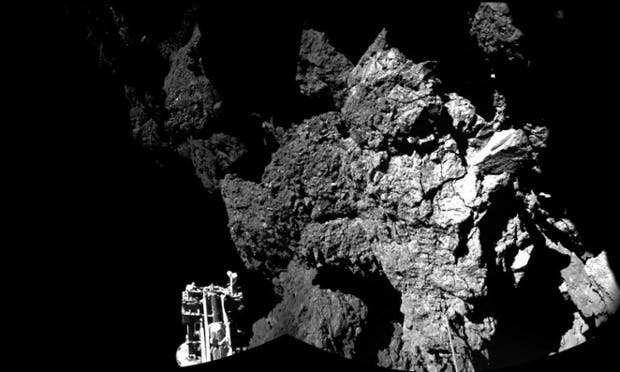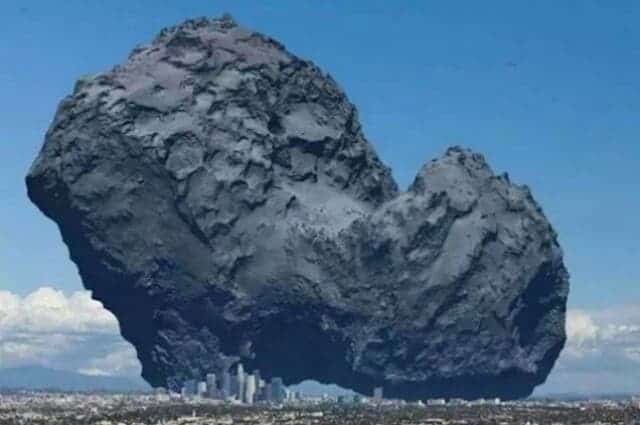OK, so we’ve been keeping you up to date with what’s been happening with the Rosetta mission, but we had to sleep eventually, and wonderful things have happened in the mean time. In case you’re not aware, here’s a short summary: Rosetta is a probe launched by the European Space Agency (the European equivalent of NASA) in order to study a comet. Rosetta has been orbiting the comet for a while, took some breathtaking pictures, and eventually sent a lander towards the probe. There have been some technical issues, but in a stunning achievement, Philae, the lander, managed to attach itself to the comet! Here’s why this is a big deal.

First image from the surface of Comet 67P/Churyumov-Gerasimenko from the Rosetta million’s lander Philae Photograph: ESA/Rosetta/Philae/CIVA/Photograph: ESA/Rosetta/Philae/CIVA
First of all, the technical achievement is spectacular. It’s the first time humans have landed anything on a comet. Comets have negligible gravity so it’s hard to establish an orbit around comets. Also, landing there is difficult because there’s a risk of the lander simply bouncing off the surface of the comet. Comets are also very mobile, with often irregular orbits, bringing even more problems to the table.
Comets are icy remnants which took shape in the initial phases of the solar system. Studying the composition of comets might yield important information about the birth of the solar system. Also, many researchers believe that comets are the initial source of water on our planet. While it is possible that some water was released from the Earth’s interior at this time, comets are a likely source of initial water. The mission could confirm or infirm this theory.

Rosetta has a wide array of machines onboard, including spectrographs, mass-spectrometers, microscopes and plasma sensors. But there is only so much information which can be gathered without actually landing on the comet – an this is where Philae enters the scene.
After successfully detaching itself from Rosetta, Philae spent 7 hours gracefully dancing its way towards the surface of the comet. Not everything went smoothly at the land, as Lander project manager Stephan Ulamec has told the BBC’s Jonathan Amos:
“We are still not anchored. We are sitting with the weight of the lander somehow on the comet. We are pretty sure where we landed the first time, and then we made quite a leap. Some people say it is in the order of 1 km high. And then we had another small leap, and now we are sitting there, and transmitting, and everything else is something we have to start understanding and keep interpreting.”
Assuming success, a scientific trove awaits; the comet has already surprised researchers several times, and there is no telling what other things we will find about our solar system. Some experiments are already underway, as scientists from the Open University explain:
The first experiment, CIVA-P, consists of seven identical cameras that will produce a panoramic image of the comet as seen from Philae. CIVA-P will characterise the landing site, mapping the surface topography and the albedo (reflectivity) of the surface. Two of the camera are aligned so as to produce stereoscopic images.
The mission is even more laudable thanks to its efficiency – it cost European citizens a mere 3.5 euro to conduct this mission – even less than a cinema ticket.



